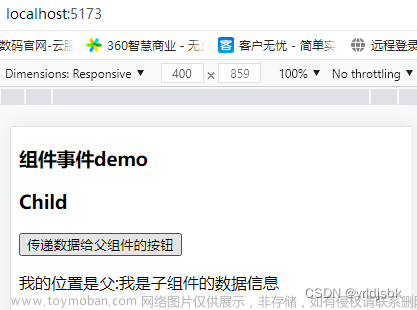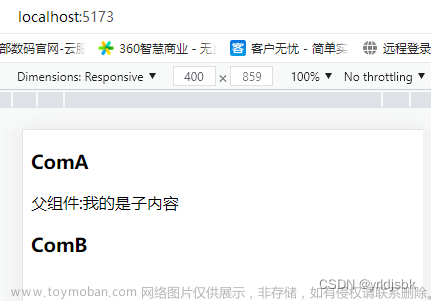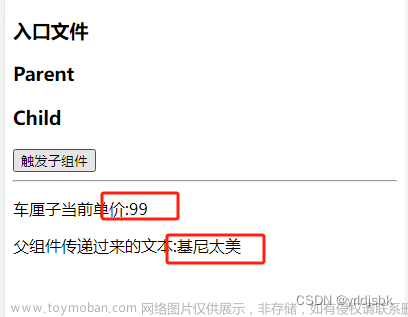<template>
<!-- <Main /> -->
<!-- <ComA /> -->
<AttrComponent class="attr-container"/>
</template>
<script>
// import ComponentEvent from "./components/ComponentEvent.vue"
// import Main from "./components/Main.vue"
// import ComA from "./components/ComA.vue"
import AttrComponent from "./components/AttrComponent.vue"
export default{
components:{
// ComponentEvent,
// Main,
// ComA,
AttrComponent
}
}
</script>
vue前端开发自学,透传属性的练习demo!以上代码是,父组件的情况。也是App.vue的入口文件内容。
<template>
<!--必须是有且仅有一个根元素,否则该透传属性不会生效的-->
<h3>透传属性demo</h3>
</template>
<script>
export default{
inheritAttrs:true
}
</script>
<style>
.attr-container{
color:red;
}
</style>这是子组件内容,AttrComponent.vue的代码内容。可以看出来,它里面是有且仅有一个根元素,H3标签,如果多一个就不行了。透传属性就会失效了。必须是有且仅有一个根元素才行。
我们还特意做了继承的设定,目前是true。允许继承。所以可以看见,的确是透传属性class成功了。

如果改成false.不允许继承的话,就无法透传那个class属性了。
 文章来源:https://www.toymoban.com/news/detail-817762.html
文章来源:https://www.toymoban.com/news/detail-817762.html
实际上,这种情况我们很少使用到。因为class,id,attribute这三样事情。我们都有各自的操作方法和语法内容。很少会有人会使用透传属性这样的操作方式。大家作为了解即可。文章来源地址https://www.toymoban.com/news/detail-817762.html
到了这里,关于vue前端开发自学,透传属性的练习demo的文章就介绍完了。如果您还想了解更多内容,请在右上角搜索TOY模板网以前的文章或继续浏览下面的相关文章,希望大家以后多多支持TOY模板网!














